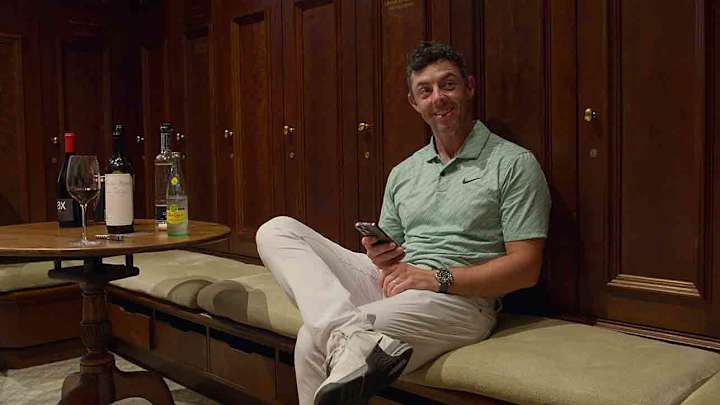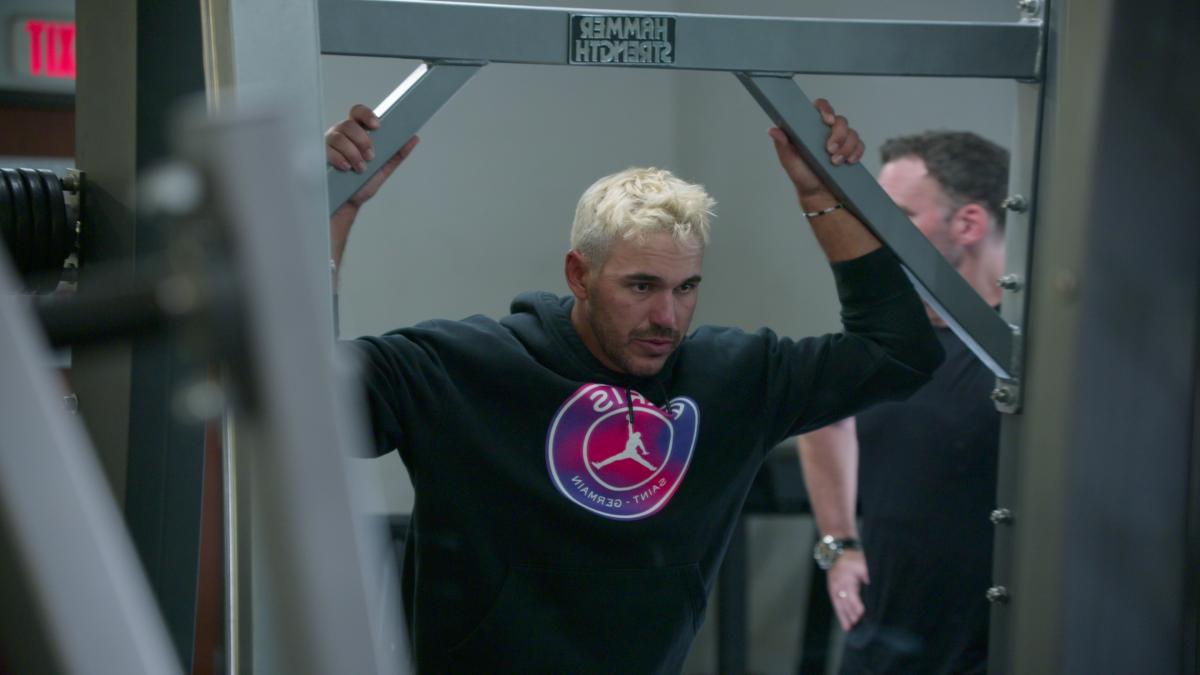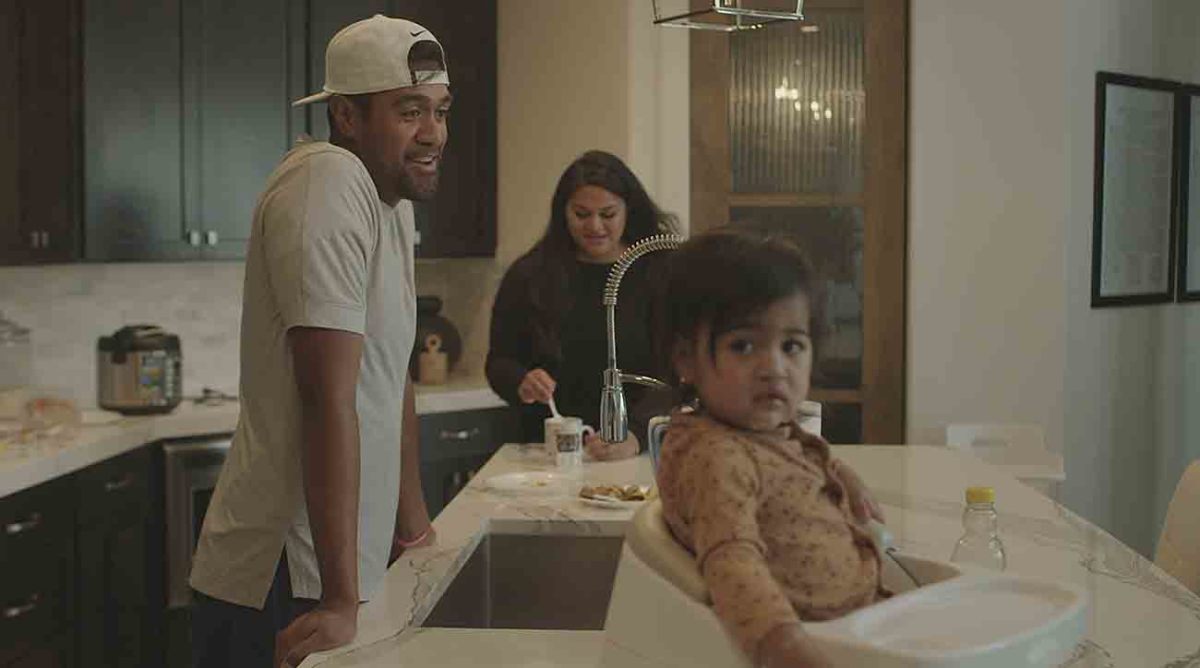Inside Access to Golf's Characters Makes Netflix's 'Full Swing' a Worthy Watch

A global streaming empire with 230 million subscribers doesn’t become the world’s second-largest media company overnight, although Netflix has come relatively close. Its swift emergence as the king of Wi-Fi friendly entertainment testifies to its depth and range of quality programming—much of it created from within—and a grasp of mass-appeal sensibilities responsible for its staggering growth.
What on earth does that have to do with golf?
Nothing until now. “Full Swing,” an eight-part series chronicling the PGA Tour’s tumultuous 2022, will be released to the public next week, and like a lot of Netflix documentaries, it takes viewers inside places they couldn’t possibly visit otherwise. Ian Poulter’s bedroom closet. Jordan Spieth’s private jet. Brooks Koepka’s head. Such rare access is the production’s most notable strength, the source of precious player humanization and figurative proof that European Ryder Cup heroes put on their pants one leg at a time, just like the rest of us.

As a whole, “Full Swing” is basically a collection of visual vignettes arranged loosely in chronological order. Each episode has a central character or two—the opener features Spieth and Justin Thomas—with the LIV Golf invasion entering the storyline near the end of the second installment, which focuses on Koepka and his ongoing struggles.
“Part of the reason why it took me 10 years to get this done is, they would never agree to a warts-and-all approach,” executive producer Chad Mumm said of the Tour’s ever-skeptical decision makers. “But by the time we got started, they had no editorial control.” As for the inclusion of LIV Golf, which is minimal in scope but central to part 7, Mumm adds, “I don’t know if they were happy about it, but they never tried to stop it. There honestly was not a heavy hand in any way, and the same goes for the majors.”
Other than for a steady diet of player profanity, Camp Ponte Vedra will have a hard time finding anything unsavory about “Full Swing.” It has a credible journalistic palate without sinking to insufferable stretches of tedium or triviality. If anything, hardcore golf fans are likely to find the series too elementary for their advanced taste. Terms such as “par” and “birdie” are explained via on-screen graphics. There must be four or five references to the fact that players who miss the cut on any given week don’t receive a dime for their performance.
There’s also an excess of play-by-play footage from tournaments played half a year ago—the 2022 PGA Championship appears in three episodes—but the off-course material is far stronger than Thomas’ improbable climb to a second major title. Mumm’s weave of storyline elements lures the audience into a parlor of dramatic competitive tension, achieving a highly compatible balance of victory and defeat.
Tony Finau remodels his career in back-to-back weeks. Mito Pereira poisons his in 20 minutes. It’s the afterward in both cases that makes “Full Swing” fulfilling.
That doesn’t mean I was swayed away from the impression that the documentary is a bit too simplistic for its own good. For a voice from the opposite end of the perspective scale, my two daughters, ages 22 and 19, neither of whom has played a hole of golf in their life, agreed to watch at least a couple of full segments and submit a subjective assessment of what they’d seen.
“Super cool series!” the 22-year-old gushed. “I learned a lot in a way that was easy to comprehend and made sense to someone who only knew golf from afar.”
My younger girl was equally bullish, if not quite as enthusiastic. “I liked the first episode a lot,” she replied. “It’s easy to watch even if you don’t know anything about golf.”
22: “I liked learning about the younger players the most. I think people my age will like this because it’s very easy to watch, well explained, and the players change quickly enough to keep your interest."
19: "The second episode was still good. I just didn’t like the topic as much. Definitely a good show!”
22: "I liked the contrast of super-rich, successful players like Dustin Johnson and Rory [McIlroy] with guys who have normal lives, like Scottie Scheffler and Tony Finau. It really showed the contrast of the league, how one tournament can change someone’s life but the mental turmoil reigns supreme.”

Who asked the old man for his opinion, anyway? “That’s the best thing I’ve heard all day,” Mumm, a golf nut since his youth, quipped of the alternative viewpoint, as if to acknowledge that any dummy-down factor was a necessity, not a nuisance. Netflix isn’t in the business of targeting a refined viewership in a niche sport. It’s looking for the broadest audience possible. Those wishing to dive deep into the well of intellect know exactly where to find Brandel Chamblee.
Mumm considers himself one of those people. Overall, he did a very nice job on this labor of love, especially given the emergence of a rival league with villainous intentions in the heart of the competitive calendar year. “As a storyteller and producer, it certainly created a lot of interest in golf,” he said of the Saudi raid. “This was unprecedented in sports. It happened in the middle of the season. Everyone’s in the same locker room one week, then it’s all very different the next. It created a whole new level of introspection.”
As the game tried to deal with that tumultuous climate, Mumm decided to make another run at McIlroy, who had declined to participate in “Full Swing” through his management firm. Feeling a dire need need to include the world’s best player in a project surveying golf’s historically altered landscape, Mumm tracked down the Northern Irishman shortly after his excruciating loss at the British Open and made one last plea.
McIlrighteous changed his mind and climbed aboard. His cooperation accounts for one of the best endings you’ll see in any documentary—a touch of class in a sea of uncertainty. Maybe those waters aren’t as troubled as we might think.
